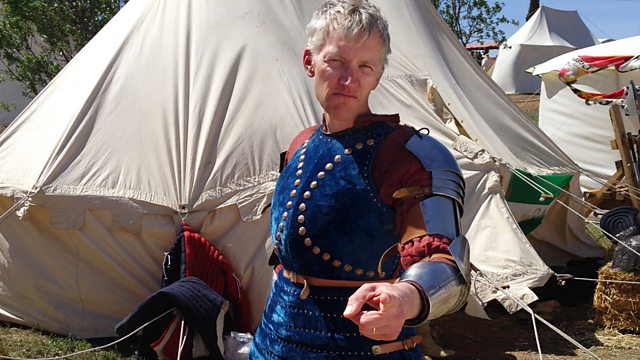The Clockwork Orange Town
Tom Holland visits Thamesmead fifty years on from its foundation, Iszi Lawrence asks why women were publicly inconvenienced, and we meet the monks brewing beer.
Helen Castor is joined by Flora Samuel, Professor of Architecture in the Built Environment at the University of Reading.
Tom Holland and Dr Matthew Green take a trip down the Thames to Thamesmead, an overspill "new town" that received its first inhabitants fifty years ago this month, but which is better known as the location used by Stanley Kubrick in his dystopian classic A Clockwork Orange. But was this brutalist solution to London's slum housing doomed from the start, or were some of the ideas of Le Corbusier and those who influenced the design of this place fairly similar to the better accepted work of Ebeneezer Howard and the Garden City movement?
Iszi Lawrence is in Fitzrovia with writer, broadcaster and Victorian historian Kathryn Hughes to find out why the lack of public toilets meant women were so inconvenienced in the Victorian and Edwardian period. What lay behind the then-accepted notion that women shouldn't "go" in public?
Monks in Leicestershire are brewing up a storm, the first batch of a new Trappist ale. But what's the historic connection between abbeys and brewing?
Producer: Nick Patrick
A Pier production for 主播大秀 Radio 4.
Last on
Guests
Helen Castor is joined by the author of
to discuss stories from today which are rooted in the past.
Thamesmead
It鈥檚 fifty years ago since the first families moved into what was effectively a new town on the marshes beyond Woolwich on the southern banks of the Thames. The planning of ,as we now know it, had attracted some of the top young architects of the age; many heavily听 influenced by communist ideals and the so-called 听ideas of people like . But, high-rise living with walkways in the sky, poor investment in amenities and terrible transport links meant that Thamesmead failed as a community even as it started life. Indeed, Stanley Kubrick decision to film there nailed its reputation as dystopian rather than utopian.
听
Tom Holland met up with the historian of London 听to assess this short history.
Women鈥檚 Conveniences
The has been charting the decline of public conveniences in the UK over the past few years. Anyone visiting a major city or using public transport will recognise the problem. There are fewer public loos. Women are particularly badly served, as queues at the theatre or football grounds will confirm. things were even worse. There were only one or two public toilets for women in London before 1900. The Victorians really did think that a women鈥檚 place was in the home and the idea of women needing to go to the toilet was, well, beyond belief!
听
Of course, men were in control of public finance, policy and planning. As 听听听told Iszi Lawrence, the provision of women鈥檚 toilets is a leading example of what historians think of as .听听听
Monks and Beer
The monks of the in Leicestershire have revived the craft of . It鈥檚 part of their quest to be as self-sufficient as possible. But, how far back does the tradition go in the UK? Helen Castor spoke to the beer historian 听 to discover a tradition that goes back for centuries before the Reformation when beer was given as hospitality but also drunk by the monks themselves who needed something nutritious to quench their thirst when working hard in the fields or in workshops around their Abbey.
听
听
Making History is produced by Nick Patrick and is a Pier Production for 主播大秀 Radio 4
Broadcasts
- Tue 17 Jul 2018 15:30主播大秀 Radio 4 FM
- Thu 27 Sep 2018 23:30主播大秀 Radio 4
Podcast
-
![]()
Making History
Popular history series where the past connects with the present.


